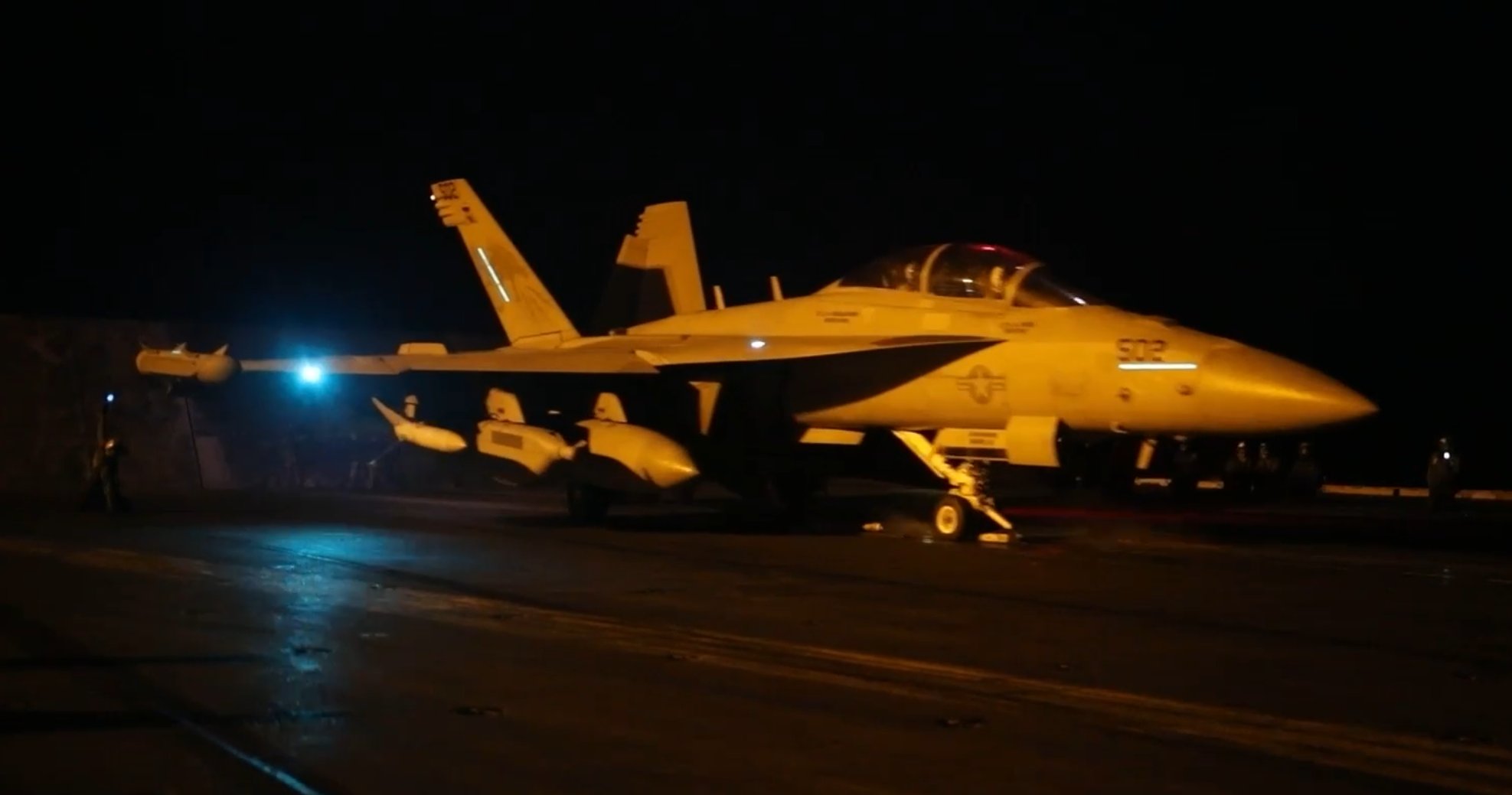Persistent Houthi missile and drone strikes against Western warships and shipping in the Red Sea are forcing an unprecedented number of combat sorties and flights from the carrier, USS Dwight D. Eisenhower.
The unremitting attacks by the Yemen-based group have triggered high Sortie Generation Rates (SGR) that the USN did not expect.
Reports say jets like the F/A-18 Super Hornet, the E-2 Hawkeye airborne early warning (AEW), or the E/A-18G Growler electronic warfare aircraft were taking off and landing “every minute.”
While all Houthi anti-ship ballistic missiles, anti-ship cruise missiles, and unmanned aerial vehicles are shot down, the relentless number and scale of the attacks have kept the carrier’s crew on their toes.
Reports quoted officers saying that the magnitude of the sorties and the activity on the carrier had never been seen before. This validates previous analyses by the EurAsian Times, which pointed to the Yemen-based group inflicting heavy asymmetrical damage on the Western navies, where air defense missiles as costly as $2 million are being used to shoot down drones as cheap as $2,000 to $10,000.
A report on Deutsche Welle earlier this month also claimed how the German navy frigate Hessen saw its “ammunition stocks running low,” presumably exhausting them after shooting down Houthi projectiles.
‘Planes Operating From Carrier Constantly’
A recent photo of a US Navy F/A-18E Super Hornet from the carrier USS Dwight D. Eisenhower in the Red Sea shows 13 ‘kill marks’ with silhouette logos of bombs and UAVs. Of those, 11 are shaped like bombs, possibly representing Houthi anti-ship ballistic and cruise missiles. The remaining two are UAVs.
It is not clear if the Hornet, from Strike Fighter Squadron 131 (VFA-131), destroyed these Houthi weapons while they were in flight or on the ground on trucks or fixed mounts. The US Central Command has also often publicized air-to-land strikes destroying Houthi’s ground launch points. Presumably, they are identified by extensive air surveillance and reconnaissance.
These preemptive strikes aimed at destroying Houthi missiles and drones before they become a threat are now the standard tactic. Earlier, the US spent months shooting down Houthi munitions after they had already been launched.
A BBC report added that they have “fired more than 300 bombs and missiles.” The report quoted the Air Boss, Commander George Zintac, who “choreographs” the fighters’ movements on the flight deck, where “a jet either launches or lands in just over a minute.”
Serving in the US Navy for “more than 30 years,” he said, “this is probably the most flying I’ve done on a deployment – every day we’re flying a tonne.”
The report added, “Row after row of more munitions are lined up in the hangar, ready for loading.” An earlier report said that “dozens of planes may take off from the carrier during a typical day, which can include multiple launch and recovery cycles over a period that can last up to 12 hours.”
The photo largely validates the unprecedented heavy activity on the carrier. According to an older report by the Director Operational Test and Evaluation (DOTE), the USS Nimitz-class carriers (to which the USS Dwight D. Eisenhower belongs) were designed for a Sortie Generation Rate (SGR) of 120 a day for a 12-hour “fly day” and 240 sorties if it is operating for the full 24 hours.
Captain Dave Wroe, who commands four USN destroyers that provide extra protection to the carriers, said the Houthi anti-ship ballistic missiles, anti-ship cruise missiles, drones, and unmanned surface and underwater vessels posed the greatest challenge to the US Navy “since World War Two.”
Rear Admiral Marc Miguez, the Carrier Strike Group commander, also indicated that conventional military might not suffice to defeat the Houthis. The strikes, “led by the US, with the help of Britain, have already degraded some of the Houthis’ military capabilities, but it certainly hasn’t deterred or stopped them.”

US Navy Also Using Sea Drones
A report on NBC News also featured the US Navy using “unmanned systems” to tackle the threat “below the water.” Captain Michael Brasseur said they were using “sea drones” that use “artificial intelligence” to “sift through information and highlight activity that’s outside the normal pattern that they may want to take a closer look at.”
Reports have identified this unit as “Task Force 59”, which is aimed to provide the US with greater surveillance and deterrence options. The outfit uses USVs like the MARTAC T-38 Devil Ray, which was used to spy on Iranian warships, gunboats, and aircraft around the Strait of Hormuz in September 2023.
Vice Admiral Brad Cooper, the then US Naval Forces Central Commander (NAVCENT), had said, “The integration of new, multidomain unmanned platforms into routine fleet operations provides more ‘eyes on the water,’ enhancing maritime domain awareness and increasing deterrence in the region.”
- The author can be reached at satamp@gmail.com
- Follow EurAsian Times on Google News
The post ‘Biggest Threat’ To US Navy Since WW2, US Aircraft Carriers Fly Planes Every Minute To Thwart Houthis appeared first on Latest Asian, Middle-East, EurAsian, Indian News.